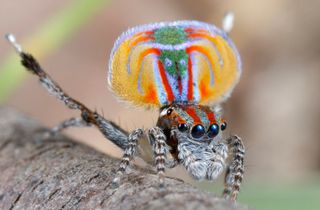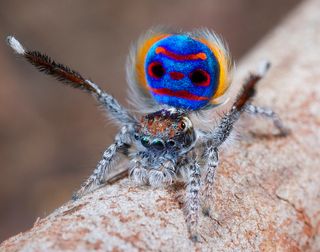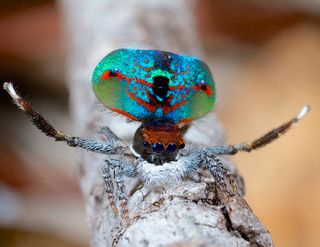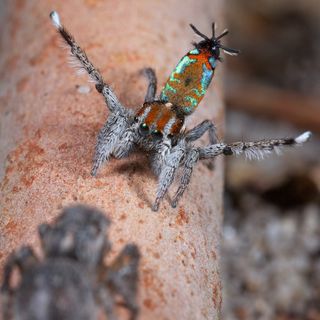Incredible Photos of Peacock Spiders
Amazing display

This is the peacock spider Maratus volans. Jürgen Otto was the first to film this spider's mating dance, in Australia. The animal got him interested in filming other peacock spiders.
Maratus speciosus

This is the peacock spider Maratus speciosus.
Showing off

The peacock spider Maratus mungaich. Otto films these spider with the video option on his DSLR, a Canon 7D with a 100 mm macro lens.
Purcell's peacock spider

Unlike some of the other peacock spiders, Purcell's peacock spider doesn't have as large of a flap to unfurl to impress his mate. But he still does okay.
Tiny spider

The Purcell's peacock spider, like most of its ilk, is quite tiny.
Up close

This is the tail flap of the peacock spider Maratus speciosus.
Doing the dance

Peacock spider Maratus calcitrans doing his dance in front of a female.
Sign up for the Live Science daily newsletter now
Get the world’s most fascinating discoveries delivered straight to your inbox.
Crouching & showing

The spots of Maratus harrisi almost look like the eyes of a damselfly.

